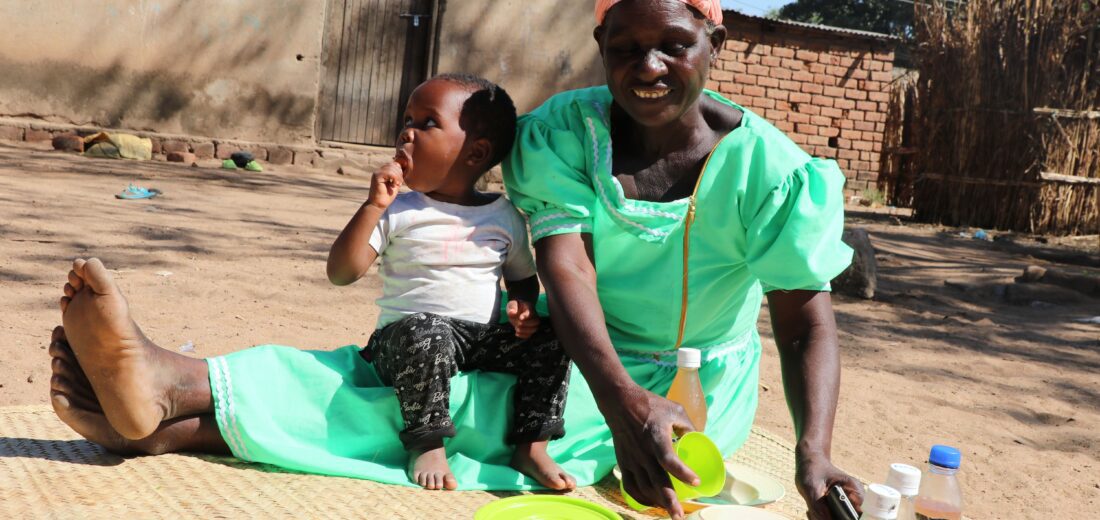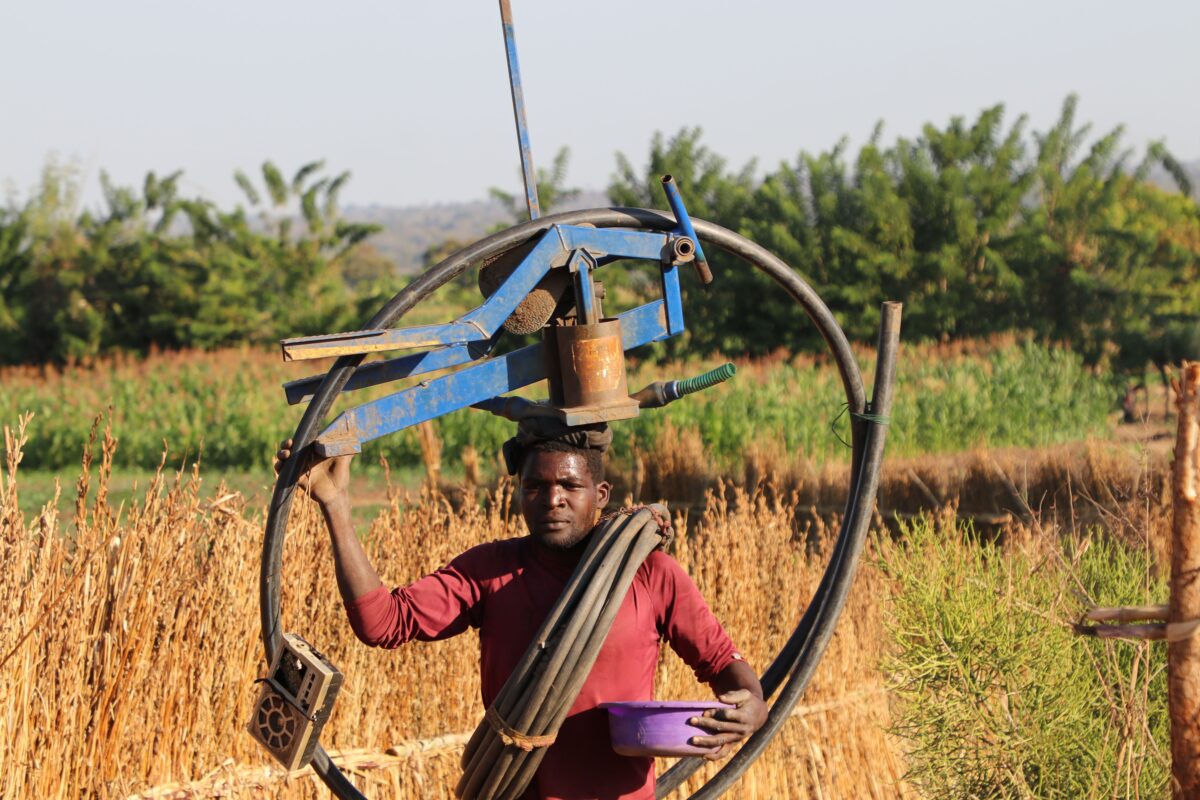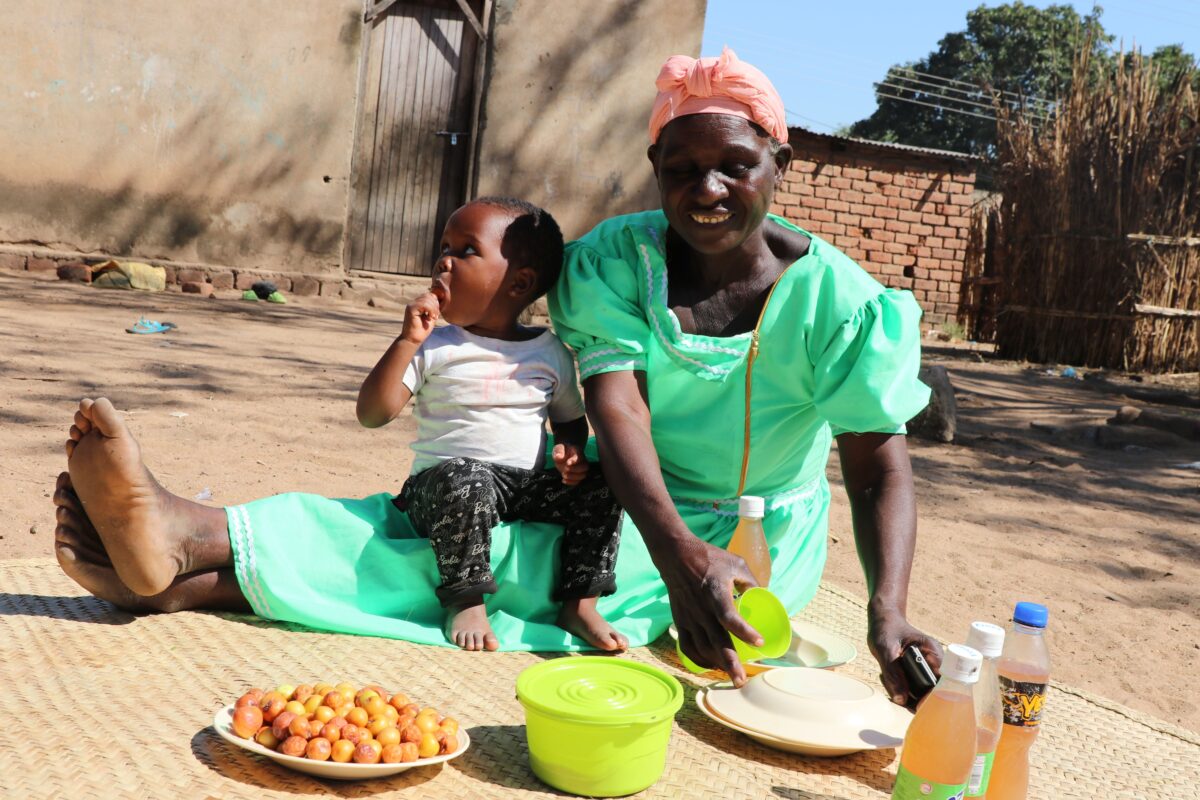
Building Resilience to Climate Change Devastations for Better Food Production
A pressing global challenge, climate change today affects various aspects of human life, one of them being food and nutritional security. Due to its heavy reliance on rain-fed agriculture and limited adaptive capacity, Malawi, a landlocked country in south-eastern Africa, is particularly vulnerable to its adverse effects. To address climate change mitigation and adaptation, as well as food security, Malawi’s best option is improved agricultural productivity.
Those least responsible for climate change often suffer the most, which is the case with Malawi, one of the world’s lowest carbon-emitting countries. However, it is ranked fifth on the Global Climate Index 2021 list of nations worst affected by climate-related extreme weather. Its most recent catastrophe was cyclone Freddy which struck in March 2023. It caused floods across the Southern Region, disrupting nearly 2.2 million people’s livelihoods.
To witness the devastating effect of climate change on the local ecosystem, we embarked on a journey to Chikwawa. It is a two-hour drive from Blantyre, the country’s largest city and commercial town. Nestled in the heart of Malawi’s southern region, it is a captivating district that beckons travellers with its enchanting landscapes and vibrant cultural heritage.
It is blessed with breathtaking natural wonders like the Majete Wildlife Reserve and a rich tapestry of traditions. As you traverse the vast plains and rolling hills, you will be greeted by the majestic Shire River, meandering through the district. This adds serenity and life-giving vitality to the surroundings.
However, the roads leading to the villages in Chikwawa District have fallen victim to the relentless impact of climate change, painting a distressing picture of their current state. Once well-maintained arteries connecting communities, these roads now bear the scars of a changing climate. Extreme weather events, such as recently experienced cyclones, have devastated infrastructure.

The Chapananga Bridge (Malawi’s longest bridge) was completely swept away, leaving behind eroded surfaces, deep potholes, and hazardous debris. Along the way, we see several spots where roads are repaired. “The road we are on turns into a river during the rainy season,” Chrispin Manyera, our driver, tells us as we head to Misomali Village. It is part of a self-reliant hub of villages that—supported by The Hunger Project—has organised themselves around a shared goal: to end hunger and poverty in a sustainable manner.
When we get there, we meet April Sipiliyano at his home. In the wake of a devastating cyclone, the forty-two-year-old father of three is busy at work repairing his house. It has been approximately four months since the incident happened. With him is his eldest son, who helps with the arrangement of the bricks. His wife prepares nsima, Malawi’s staple food made from corn flour. Their other two children are in school.
“This is not the first time I am rebuilding my house,” he says. “I have fallen victim to cyclones several times, with the most devastating one being in 2015. I lost everything and was forced to move back to my mother’s house with my family.”
Alternative farming methods
Sipiliyano, who has cultivated for years, recalls how his farm fields were damaged in different seasons due to floods. “Our region experiences adverse weather conditions. It is prone to drought and when it rains it floods. As a general rule, we waited for the rainy season to plant crops and invested in farm inputs, only for them to be carried away. That meant we had no food in rainy and dry seasons. We were often forced to buy food from other districts, which was expensive,” he explains.
Encouraged by their training, the farmers looked for alternative methods of farming to counter the unpredictable weather patterns. This led to the adoption of “winter farming,” a term coined to define farming during the dry season. This means the farmers must give their crops full attention, water them manually, and control pests. This assures them of a bumper harvest. This method has tremendously improved their livelihoods while ensuring household food security and economic empowerment.
Beyond farming, communities are also working on measures to mitigate climate change and improve food production. “Some years back, the majority of people relied on natural resources. Many trees were cut down for firewood, timber and charcoal. This is a contributing factor to the climate crisis we face today. We have received trainings that have empowered people to seek alternative means of generating income and stop destroying natural resources for livelihood survival,” he adds.
Currently, he is a community volunteer for The Hunger Project (THP). “I engaged with the project in 2016 and was trained on environmental issues. Consequently, we took it as our initiative and have been preparing tree seedlings as we practice reforestation,” he states. With combined efforts, Sipiliyano and his team have created three tree forests. One is lying on a 70m by 80m piece of land, another on a 60m by 90m and the last one on a one-hectare piece of land. All these are efforts to restore adequate rainfall and enhance carbon sync.

Their efforts are paying off. Around 1.5 km from the banks of the River Mwama, plants flourish. There is a distinct contrast between the farms of those that have been trained and those that have not; on the one hand lush green farms and on another dry land, dusty thickets. Farmers here have benefitted from the Kadumba irrigation scheme. It was a partnership between THP and African Parks, which manages the Majete Wildlife Reserve. This was to prevent communities from encroaching on the park. 193 households, including Isaac Chapepa, in his late 60s, benefit from the irrigation scheme.
“In my old age, farming would have been difficult without this irrigation scheme. I would likely focus on a very small piece of land to farm, enough for my consumption. But I can still do commercial agriculture on a much larger piece of land,” he says.
Farmers here have embraced alternative “winter farming” practices and adopted innovative approaches to effectively control pests using locally produced products. One such method gaining popularity is the utilisation of river sand as a natural pest control measure. This ingenious technique has revolutionised farmers’ pest combat while minimising harmful chemicals.
“The coarse texture of the sand creates an unfavourable environment for pests especially when it is hot, discouraging them from infesting the fields. Moreover, the abrasive nature of the sand acts as a physical barrier, making it difficult for pests to move freely and causing discomfort to their sensitive bodies,” Fransico Mbuto, a farm trainer for the community, explains.
Winter farming
Aside from river sand as a means of controlling pests, he demonstrates how even fish sauce can be used. It attracts ants which feed on pests when applied to plant tunnels. Additionally, they also use the Nim trees bitter leaves. “When they are pounded to form the juice, it is poured into the plant tunnels. This provides an unfavourable environment for pests, which die of hunger,” he explains.
The adoption of alternative winter farming practices and embracing eco-friendly pest management techniques has sparked a positive transformation in agriculture. Farmers are diversifying their crops and extending growing seasons. This innovative approach not only enhances food security in the region but also sets a remarkable example for sustainable farming practices worldwide.
Originally, the community members were mobilised and trained by The Hunger Project. Today, farmers are trained in these new methods by their neighbours, on land owned and managed by the community. Mbuto also volunteers as one of the managers of the now self-reliant community food bank.

“After training them on pest control techniques, we expect high yields during harvest time. Under community leadership, we buy most of their farm products and keep them in the bank. This is especially maize and sorghum which is highly consumed here. During the rainy season when food is scarce, we sell it to them at an affordable price,“ he adds.
As malnutrition poses a significant challenge in most parts of Africa, particularly children, a remarkable solution lies within reach in Southern Malawi. The abundant Moringa tree, with its nutrient-rich leaves and versatile applications, holds substantial potential to combat malnutrition and improve children’s health in this region.
Veronica Chakanza, (54), is a nutritionist champion in her village. She demonstrates this when we meet her feeding her two-year-old grandchild with home-made sweet potato juice, which she has prepared, accompanied by sweet potato doughnuts.

“Over the years, we have learned to use what we have locally to add nutritional value to our meals,” she says. “Back then many children suffered from malnourishment. At the dispensaries all they received was peanut butter. I was fortunate to be recruited by the government for the weighing of children under five years to determine malnutrition levels. This was back in 2008.”
Years later, another project came up which addressed the malnutrition issue by utilising locally available resources, with Chakanza playing a part in it. ““Trained community volunteers helped us discover the value of nutritious meals and a balanced diet. Our area has a lot of sweet potatoes and they have nutritional value, which is why we chose to maximise their use. Beyond cooking potatoes for starch, we use its leaves to process natural juice and vegetables. We also use moringa leaves to prepare porridge, especially for children below five,” she says.
The Moringa tree, known as the “miracle tree” or “tree of life,” thrives in Malawi’s southern region and offers a multitude of benefits for improving nutrition. Its leaves are a rich source of vital nutrients, including protein, vitamins A and C, iron, calcium, and antioxidants. These nutrients are crucial for healthy growth and development in young children.
With the assistance of local farmers and communities, promoting the cultivation and consumption of Moringa leaves can become a transformative strategy to combat malnutrition. The leaves can be incorporated into various local dishes, such as stews, soups, and porridge. They provide a sustainable solution to address nutritional deficiencies by enhancing the nutritional value of their meals.
And just like that, from the devastation of climate change, communities in Southern Malawi continue to emerge as beacons of resilience and hope.

Leave a Reply